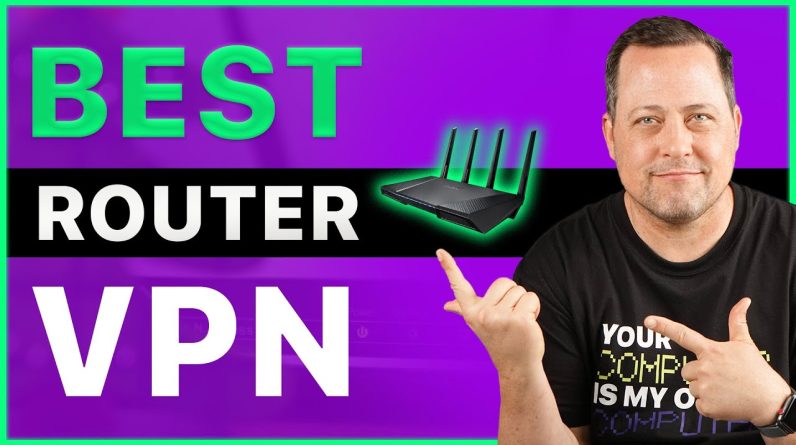Here’s How to tell if your Wi-Fi Network Has Been Hacked
Detecting if your Wi-Fi network has been hacked or compromised is essential for maintaining your network’s security and privacy. Here are some signs and methods to help you determine if your Wi-Fi network has been hacked:
- Unexpected Devices on Your Network:
- Check the list of connected devices in your router’s admin interface. Look for unfamiliar devices, especially those you don’t own or recognize.
- Slow Network Performance:
- If your Wi-Fi network suddenly becomes slow or unreliable, it could be due to unauthorized users or a hacker consuming your bandwidth.
- Changed Passwords:
- If you find that your Wi-Fi network password or router admin password has been changed without your knowledge, it’s a strong sign of intrusion.
- Strange or Unwanted Pop-Ups:
- If you see a sudden increase in unwanted pop-up ads or browser redirects, it could be due to malicious activity on your network.
- Unfamiliar or Altered Network Names:
- Check if your network name (SSID) has been changed to something unusual or offensive. This could be a sign of unauthorized access.
- Weird Activity in Your Router’s Admin Interface:
- Log in to your router’s admin interface and check for unusual settings or changes that you didn’t make. This could include port forwarding rules, DNS server changes, or altered firewall settings.
- Unauthorized Access to Devices:
- If someone gained access to your network, they might attempt to access devices within your network. Look for signs of unauthorized access to your computers, smart home devices, or network-attached storage.
- Unexplained Data Usage:
- Monitor your data usage. If you notice a significant increase in data usage without any corresponding increase in your own activities, it may indicate someone else is using your network.
- Unexpected Outages or Reboots:
- Frequent Wi-Fi outages or sudden router reboots can be a sign of a security breach, especially if it coincides with unusual activities on your network.
- Check for New or Altered Devices:
- Regularly review the list of connected devices in your router’s admin interface to spot any new or suspicious devices.
- Use Network Monitoring Tools:
- Consider using network monitoring tools or intrusion detection systems to detect unusual activity on your network.
- Regularly Update Firmware and Change Passwords:
- Ensure your router’s firmware is up to date and that you change your Wi-Fi password and admin password periodically.
- Enable WPA3 or WPA2 Security:
- Use strong encryption protocols like WPA3 or WPA2 on your Wi-Fi network to make it more difficult for attackers to crack your Wi-Fi password.
What To Do If Your Wi-Fi Network Has Been Hacked
If you suspect that your Wi-Fi network has been hacked, take the following steps to mitigate the issue:
- Change your Wi-Fi network password immediately.
- Change your router admin password to a strong, unique one.
- Update your router’s firmware to the latest version.
- Review and remove any unauthorized devices from your network.
- Consider enabling MAC address filtering, which allows only trusted devices to connect.
If you’re unsure about the security of your network, it’s a good idea to consult with a cybersecurity professional or your internet service provider for further assistance.
Protect your whole network!
The world’s leading VPN at a huge discount
Get NordVPN
***
Your Wi-Fi is a private place connecting all your online devices. Naturally, cybercriminals often target private Wi-Fi networks. This video explains how to tell if your Wi-Fi network has been compromised and what to do if such a thing has happened. First, you shouldn’t panic. Simply take measures to minimize the consequences. And, of course, use all recommended precautions.
***
Contents:
00:00 Intro
00:20 Wi-Fi hacking threats
00:48 Signs of a hacked Wi-Fi network
02:23 What to do if your Wi-Fi network has been hacked
03:11 How to prevent your Wi-Fi network being hacked
***
If a hacker breaches it, they can hack your connected devices, steal your files, or even spy on your online activities. So you should always be on guard and take immediate action if you notice something suspicious taking place in your network.
Slow speed can occur during peak times or some other bandwidth disruptions. However, if you experience it all the time and together with the further mentioned symptoms, it’s a serious red flag Your speed can be slow because an intruder can use your network for distributing malware, remote connections to other devices, piggybacking, or other malicious activities.
Attackers can try to connect their devices to your network. You can easily check it by logging in to your router’s IP address in your web browser and looking up the list of connected devices.
Usually, a device that tries to remotely access your network won’t have an address that matches the first three numbers of your router’s private address. Also, be aware that unrecognized software on your devices is also a sign of an intrusion.
Cybercriminals usually change credentials after penetrating your network to stop you from tweaking your settings and protecting yourself.
So if you can’t log in to your router anymore, you can almost be sure that something’s wrong. Once inside your router, hackers can adjust its settings however they want and cause you much trouble.
But first of all, don’t panic if you notice any of these signs. Instead, take the following steps.
First, reset your router. If you have strong suspicions of the hackings, we recommend doing a factory reset. It can reset malicious changes and remove certain kinds of malware.
You should also change your router and Wi-Fi passwords immediately. Just make sure to use the strong one.
Also, immediately uninstall all the strange software you find on your devices.
If you notice unrecognized devices, kick them out of your network immediately. Also, disable remote administration on your router to cut off the access for hackers.
Finally, run a malware scan to check if there’s some malicious stuff left on your devices.
Prevention is another crucially important aspect of protection. We strongly advise you to constantly update your software, use strong passwords, avoid clicking suspicious links and use a VPN to minimize the Wi-FI hacking threat.
***







